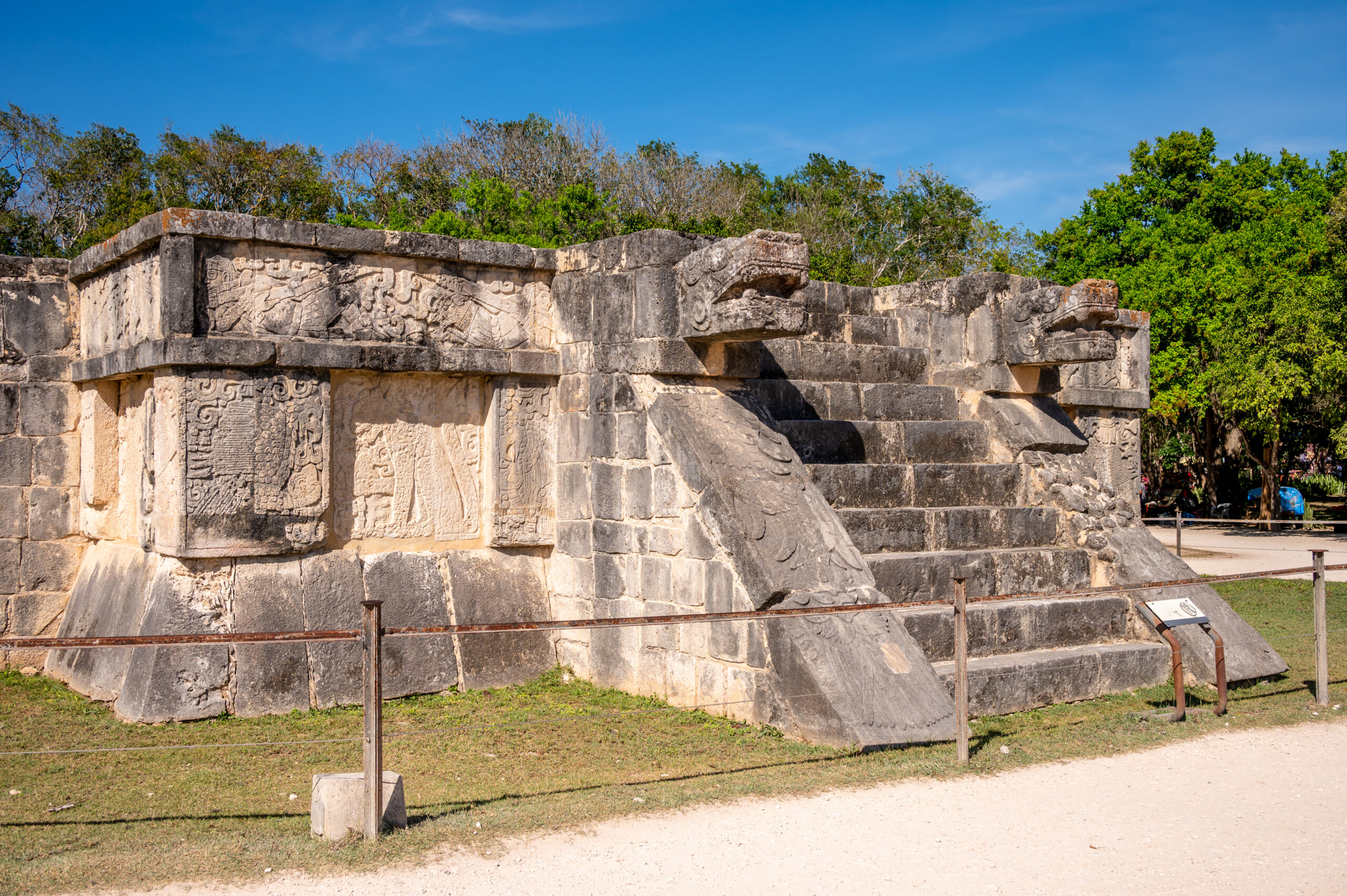
Explore the Mayan Civilization
Uncover the Mayan civilization through Quintana Roo's diverse archeological sites.

The are a hundred reasons to Explore the Mayan Civilization. The Mayas lived in symbiosis with their environment, integrating it into their lives’ rituals from day one. Governed by the cyclical nature of the calendar wheel, men and women assumed their roles within Mayan society and population. Known for their courage in warfare and utilized for political purposes and territorial control, they were also nature enthusiasts, deeply connected to their gods and genealogical mythology.
Set off on a journey to uncover the rich history of the Mayan culture in the warm landscapes of Quintana Roo. Explore an array of archeological sites that preserve a fascinating past, telling a tale worth experiencing.
Constructing their worldview and way of life from their surroundings, the Mayas, much like Quintana Roo‘s early inhabitants, found sustenance and resources in the abundant ocean.
Here is a list of the most emblematic settlements in the state, divided by zones. This way, it will be easier for you to plan your getaway.
Mayan Civilization in the South

Photo by Victorgrigas, wikicommons
Kohunlich: The original name of this settlement remains unknown. Kohunlich derives from the English “cohune ridge,” referring to the presence of these palm trees, indigenous to the Petén area.
Kinichná: Translating to “house of the sun” in Mayan, this archeological site lies in southern Quintana Roo, northwest of Chetumal, forming part of the Dzibanché-Kinichná complex.
Dzibanché: Mayan for “wooden writing,” alluding to the wooden lintels situated in Building VI, meticulously preserved for posterity.
Oxtankah: In 1937, researcher Alberto Escalona Ramos named it Oxtankah, potentially meaning “in the middle of three towns,” “three neighborhoods,” or “a place surrounded by ramón trees.”
Ichkabal: Covering an area of over 23 square miles, Ichkabal comprises several monumental settlements, with the primary site featuring a complex ceremonial center of five buildings.
Explore the Mayan Civilization in the Center
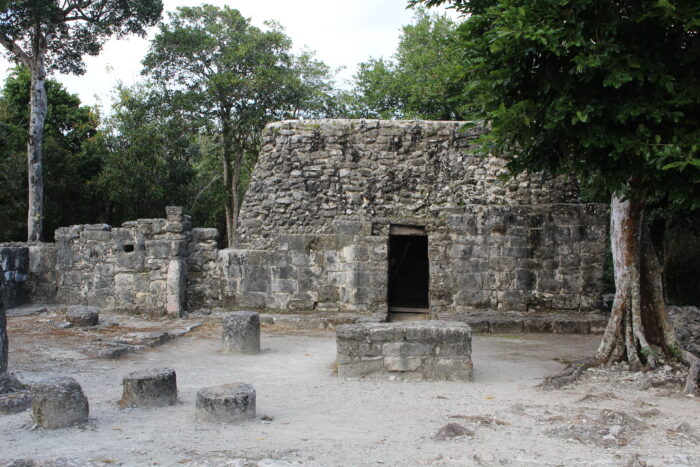
San Gervasio: Devoted to the goddess Ixchel, the deity of midwifery, fertility, medicine, and weaving.
Cobá: Inscriptions found on site hint that Cobá was the city’s original name. Its proximity to lagoons gives rise to its possible meaning, “choppy water.”
Chakanbakán: Its original name remains a mystery. The city’s central core is encircled by Om lagoon, while another lagoon named Chakanbakán, denoting “surrounded by savannah,” lies north of the archeological site.
Chacchobén: No evidence indicates its pre-Hispanic name, instead it has adopted the name of the ejido common land where it resides, signifying “place of red corn.”
Tulum: Relatively recent, Tulum translates as “wall” or “palisade,” alluding to its preserved fortifications.
Xcaret: Its origin and meaning remain undisclosed, yet in previous times it was known as P’olé, derived from the root p’ol, which is related to commerce, transactions, and trade with merchants.
Mayan Civilization in the North
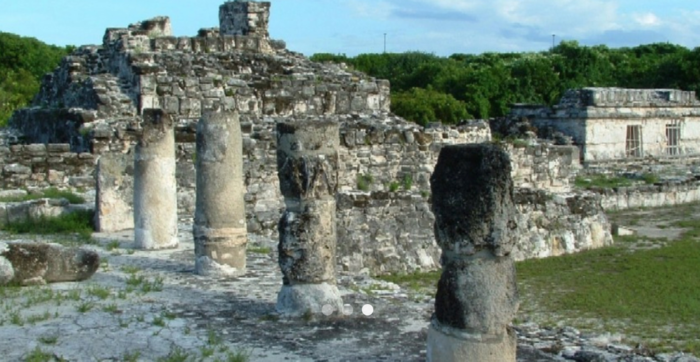
El Rey Archeological Zone: Named after a sculpture resembling a monarch, or rey, with its head preserved in Cancún’s archeological museum.
San Miguelito: Named after a former copra ranch that operated between 1950 and 1970 in this area. This is an ancient site dating back eight centuries, home to the awe-inspiring Palace of Chaac.
El Meco: The nickname of a local 19th-century resident, known for a malformation in his lower extremities.
Cancún, Q.R., México
See map
 Highlights
Highlights
 Highlights
Highlights
 Highlights
Highlights
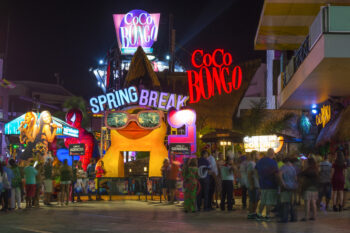 Highlights
Highlights
 Highlights
Highlights
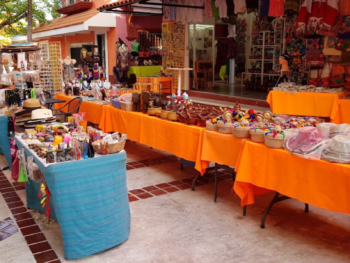 Highlights
Highlights
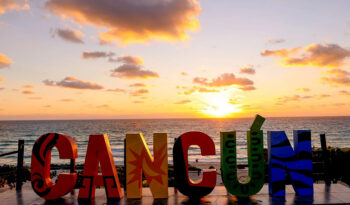 Highlights
Highlights
 Highlights
Highlights
 Highlights
Highlights
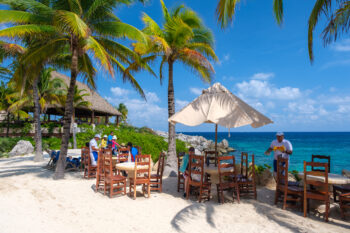 Highlights
Highlights
 Highlights
Highlights
 Highlights
Highlights